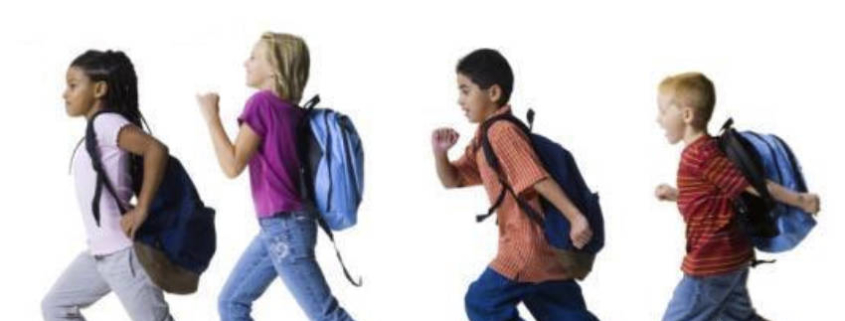The Effects of Backpacks on School-Aged Children
“As the twig is bent, so grows the tree”William Garner Sutherland (1873 – 1954) Founder of Cranial Osteopathy
Most children are required to carry heavy school bags to and from school each day, and the load increases as they reach higher grades. Sports clothing and equipment often adds another bag to their load. Your child’s spine could be in for a tough time coping with all the increased stress, and when you add poor posture, lack of exercise and hours of computer time each day into the mix. According to a study published in the journal ‘Spine’, daily backpack carrying is a frequent cause of discomfort for school children. School backpacks were felt to be heavy by 79.1% of children, to cause fatigue by 65.7%, and to cause back pain by 46.1. Studies show children should not carry any more than 10 per cent of their body weight and that anything over 15 per cent can be damaging.
If the child has to lean forward when walking with a loaded pack, it is too heavy. A heavy backpack has a number of undesirable effects to your child’s spine. It distorts the natural curves in the middle and lower back, causing muscle strain, headaches, irritation to the spine joints and the rib cage, reduced breathing capacity and may hamper his/her overall growth. Spinal dysfunction that results from these poor habits, may affect your child’s ability to study or participate in sport; setting a poor foundation for spinal health that may carry through into adulthood.
The posture that a child habitually assumes will affect the shape of the bones and the way in which the end plates harden and form. This is particularly evident in the spine. When a child spends a lot of time sitting and compressing the spinal vertebrae unnaturally, the soft end plates may become inflamed and also compress causing malformation of the vertebrae. Too much early compression can cause lifelong conditions such as Scheuermann’s disease or permanent stooped posture.. It is not correctable in later life which is a reason that all parents should take their child to be examined by an osteopath who specializes in detecting and correcting this development at a young age.
Another condition that develops in adolescents with a 9:1 majority in girls is juvenile scoliosis. It is very important to monitor the development of your child’s spine most especially checking from age 10-13 for this development.
If your child has an underlying condition, experiences pain and experiences difficulty with walking with their school bag, the risk of back pain is likely to increase further. Osteopathic assessment and treatment can assist with the recovery process. An osteopath will be able to assess your child walking with their school bag and identify strategies to help avoid the onset of pain.
School can be a challenging time for children, so ensuring they are as comfortable as possible is important to their physical and mental development.
View a list of common complains that Osteopathy can assist with
Discovery the benefits of Osteopathy
- What is Osteopathy?
- Adult health issues
- Babies and Children
- During and after pregnancy
- Common Complaints
- Testimonials
- Sports Injuries
- Genral Osteopathy FAQs
- The Science & Reasearch



